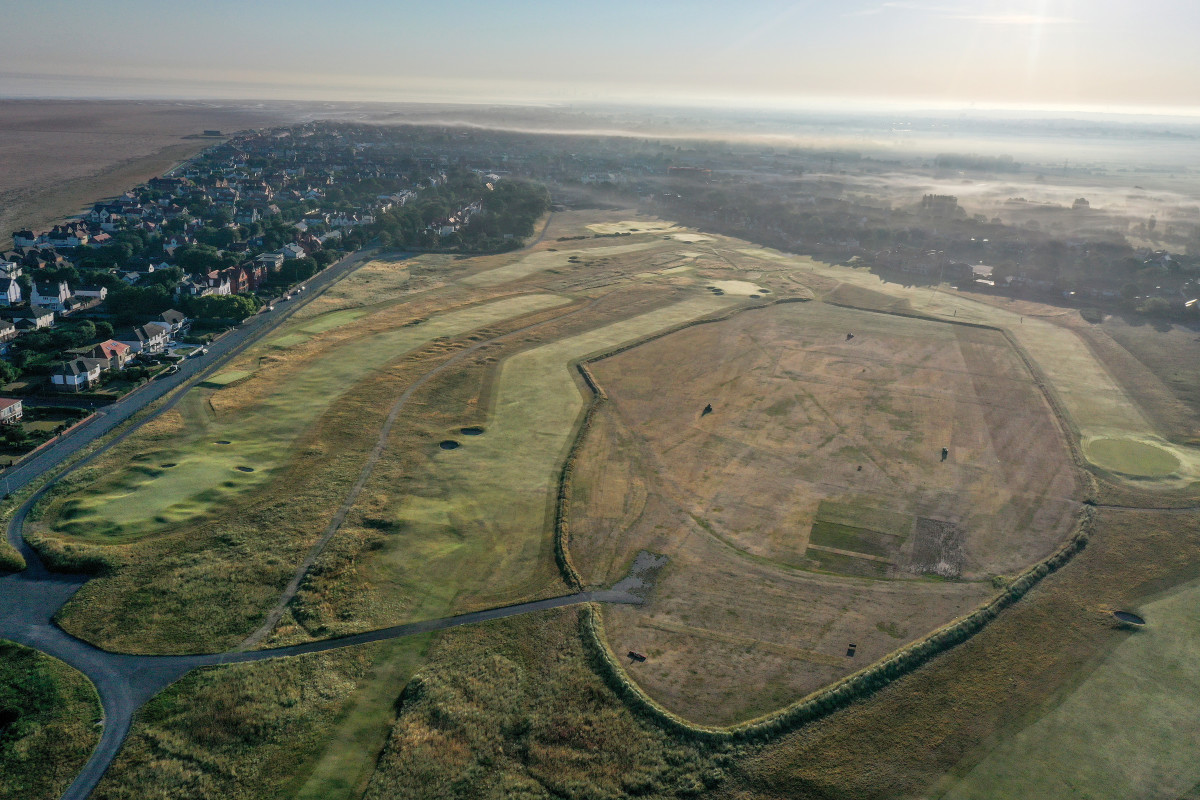Internal Out of Bounds Could Cause Drama at British Open, But It’s There for a Reason
On the 3rd and 18th holes of this week’s British Open at Royal Liverpool, players will need to avoid perhaps the worst penalty in golf: out of bounds.
Hit it on the opposite side of that dreaded white spray-painted line, and players will not only have to take a penalty stroke, but they’ll have to play their next shot from where they last hit it. The painful process is fittingly referred to as “stroke-and-distance,” and at Royal Liverpool, the club members play those holes with the same tricky obstacle.
But the O.B. at this year’s Open Championship venue is even nastier than the typical white stakes on the perimeter of a golf course.
Players will have to steer clear from an area at Royal Liverpool that is actually located in the middle of the property, rather than along its edges. The 3rd and 18th holes border what is now Royal Liverpool’s practice ground, but at the Open it will be covered in hospitality and merchandise tents.
That’s why the O.B. at Hoylake is considered “internal,” and it’s a somewhat rare golf course feature that has been the subject of considerable controversy. At this year’s PGA Championship, internal O.B. was in play on the 6th hole, but it wasn’t nearly as invasive as it will be this week.
How close is the OB right all the way up 18?
— Adam Kirk (@DGBetting_) July 17, 2023
This close. pic.twitter.com/CpreXZWk7j
This week, more than a few players will likely have to take the painful stroke-and-distance penalty even though their shot is perfectly playable. It happened to Rory McIlroy at the 2019 Open at Royal Portrush: He hit a driving iron just a few yards past the white stakes and the slight miss quickly turned into a quadruple bogey.
On Hoylake’s 426-yard 3rd hole (which is actually the 1st hole for club members) players can choose to take on the internal out of bounds by cutting the corner on the sharp dogleg right. But the majority will likely bail out to the left and eliminate the risk completely.
On the par-5 18th hole, white stakes run down most of the right side of the hole. Danger will lurk just yards away from the fairway as players attempt to reach the green in two.
The two instances of internal O.B. might seem unfair upon first glance, but there’s actually a historical explanation behind the unconventional setup.
Long before the area was deemed a practice ground, it was a race track for horses. In the 1870’s the Liverpool Hunt Club raced in that round-ish area in the middle of the course, and small mounds known as “cops” mark where the railings of the track used to stick in the ground.

“The famous cop—the out of bounds feature on the right hand side—has been brought in,” Martin Ebert said, the lead designer for Royal Liverpool’s course changes. “To reach the green in two shots will take two of the very best blows that these guys can muster.”
Although the internal O.B. will undoubtedly be a hot topic at the final major championship of the year, the most accurate and strategic players shouldn’t take issue with it, as long as they steer clear of the significant penalty.
Brooks Koepka, this year’s PGA champion, perhaps summed it up best: “It’s fine. Just don’t hit it over there and you won’t have a problem, right?”
